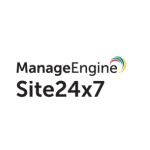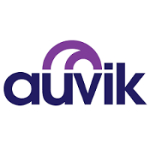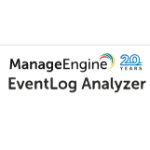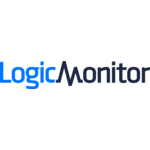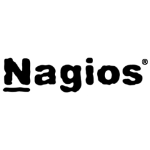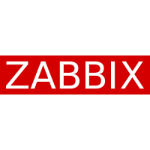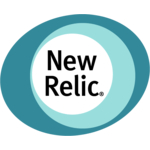
TechnologyCounter provides genuine, unbiased real user reviews to help buyers make informed decisions. We may earn a referral fee when you purchase through our links, at no extra cost to you.
List of 15 Best Server Management Software
Showing 1 - 15 of 29 products
ManageEngine OpManager
Monitor routers, switches, firewalls, servers, and VMs for fault and performance
ManageEngine OpManager is a comprehensive network monitoring solution that offers real-time insights into the health, availability, and performance of network devices. The solution provides advanced fault and performance management capabilities acros...Read ManageEngine OpManager Reviews
ManageEngine Site24x7 is a SaaS-based, AI-powered observability platform for DevOps and IT operations. The cloud-based platform’s broad capabilities help predict, analyze, and troubleshoot problems with end-user experience, applications, microservi...Read ManageEngine Site24x7 Reviews
Auvik is a network management tool designed to simplify and streamline the complexities of IT infrastructure management. With its intuitive interface features, Auvik helps businesses effectively monitor, troubleshoot, and secure their networks for ma...Read Auvik Reviews
Log management, auditing, and IT compliance management made easy
ManageEngine EventLog Analyzer an innovative solution for effective is a event log management. With its advanced features and user-friendly interface, this software simplifies the process of monitoring and analyzing event logs to ensure the security...Read ManageEngine EventLog Analyzer Reviews
Dynatrace is trusted by some of the worlds leading brands as a top-tier software intelligence platform. With its advanced features and innovative technology, Dynatrace provides real-time monitoring, deep insights, and automatic problem resolution for...Read Dynatrace Reviews
LogicMonitor is an innovative software that helps businesses of all sizes monitor and optimize their IT infrastructure. With its advanced features and user-friendly interface, businesses can easily gather performance data, detect anomalies, and preve...Read LogicMonitor Reviews
Opsgenie is a incident management tool designed to provide seamless communication and collaboration among teams in order to efficiently respond to and resolve any critical incidents that may arise. With its user-friendly interface features, Opsgenie...Read Opsgenie Reviews
NinjaOne the ultimate software solution for streamlining your daily tasks and boosting productivity. With its user-friendly interface features, NinjaOne simplifies your workflow and empowers you to achieve more in less time. Say goodbye to cluttered...Read NinjaOne Reviews
Nagios, a powerful monitoring and alerting software, helps businesses ensure the smooth is a functioning of their IT infrastructure. With its advanced features and user-friendly interface, Nagios allows for real-time tracking and troubleshooting of n...Read Nagios Reviews
Zabbix, is a solution for monitoring and managing your IT infrastructure. With its powerful features interface, Zabbix will help you stay on top of your network, servers, and applications. Stay proactive and ensure smooth performance with Zabbix. Dis...Read Zabbix Reviews
New Relic is a leading software platform that helps businesses maximize their digital performance. With powerful tools and insights, New Relic enables organizations to monitor and optimize their applications, websites, and infrastructure in real-time...Read New Relic Reviews
ScienceLogic is a software suite that enables organizations to monitor and manage their entire IT infrastructure. With its robust capabilities and user-friendly interface, ScienceLogic is the go-to solution for optimizing performance, ensuring securi...Read ScienceLogic Reviews
Plesk is a and user-friendly control panel that simplifies website management for web professionals and hosting providers. It offers a seamless is a way to manage websites, servers, applications, and automate tasks, effectively increasing productivit...Read Plesk Reviews
Atera is a software designed for modern businesses. With its intuitive interface and powerful features, Atera simplifies IT management and boosts productivity. Its innovative technology streamlines tasks, improves response time, and reduces downtime...Read Atera Reviews
cPanel, the leading web hosting control panel, offers a user-friendly interface that simplifies website management for businesses and individuals. With its intuitive design and powerful features, cPanel allows users to easily manage files, domains, d...Read cPanel Reviews
- What Is Server Management Software?
- Top Reasons Why Businesses Need Server Management Software?
- What Are the Top Key Features of Server Management Software?
- What Are the Top Benefits of Server Management Software?
- What Are the Steps to Choose the Right Server Management Software?
- What Are the Types of Server Management Software for Different Industries?
- What Are the Technology Trends for Best Server Management Software?
- What Are the Deployment Options for Server Management Software?
What Is Server Management Software?
Server management software refers to a category of software that facilitates the monitoring and administration of distant services and servers. The purpose of this system is to offer insight into the overall well-being and efficiency of all the services and servers under management.
Server monitoring tools plays a crucial role in facilitating the prompt identification of issues on distant servers, enabling enterprises to promptly address and resolve these problems in real time.
Additionally, it facilitates the automation of routine processes within enterprises, including patch updates, software upgrades, and system backups. The server management system is utilized to centrally configure multiple servers, identify alterations in hardware or software, and execute server recovery operations. Additionally, it facilitates the automation of mundane administrative chores, such as the management of software patches and the deployment of applications.
Moreover, this technology aids enterprises in guaranteeing optimal operational continuity by effectively identifying instances of server downtime or malfunctioning and subsequently initiating remote restart procedures. The best server management software has the potential to enhance security measures by effectively identifying and detecting illegal access attempts.
Furthermore, it may promptly notify IT personnel of any suspicious activities occurring on remote servers. Additionally, it aids IT departments in the monitoring of system utilization and performance, as well as the assessment of system health and the generation of statistical reports.
In essence, the best server management software facilitates the efficient and cost-effective management of remote services and servers, hence ensuring the security, currency, and optimal functioning of an organization's IT infrastructure.
Top Reasons Why Businesses Need Server Management Software?
1. Increased Efficiency: The top server management software plays a crucial role in enhancing the overall operational efficiency of a firm through the automation of monotonous and repetitive processes. This has the potential to allocate employee time more efficiently towards activities that provide more productivity.
2. Security Monitoring: Server management software possesses the capability to identify security threats, including but not limited to malicious assaults, malware, and unauthorized access attempts. By doing so, it aids in the reduction of potential risks associated with data and system breaches.
3. Software Updates: The utilization of the best server management software can streamline the task of maintaining software currency, hence diminishing the vulnerability to potential vulnerabilities that may exploit outdated software.
4. Cost savings: The implementation of automation in IT tasks has the potential to effectively mitigate long-term costs, as manual IT processes necessitate a substantial allocation of time and resources.
5. System Administration: It facilitates the streamlined management and monitoring of systems for system administrators and technical teams. This encompasses the tasks of overseeing user access privileges, configuring server configurations, and monitoring server performance.
6. Improved Reliability: The utilization of the best server management software can effectively contribute to the maintenance of optimal system performance and availability. The continuous availability of services is of significant importance for enterprises reliant on round-the-clock operations.
7. Data Backup: The utilization of a server management system can automate the recurring task of data backup, hence diminishing the need for manual intervention and augmenting the probability of data retrieval in the event of data loss.
8. Automation: The implementation of automation in IT and administrative duties has the potential to mitigate the occurrence of human errors and alleviate the burden of labor-intensive responsibilities on IT personnel.
9. Scalability: The utilization of server monitoring tools facilitates the process of system expansion and component upgrades, hence enhancing the scalability of a firm as it progresses. This enables enterprises to achieve cost savings by utilizing resources based on their immediate requirements and subsequently expanding their capacity if necessary in the future.
10. Improved Performance: Server monitoring tools play a crucial role in maintaining server performance by continually checking for potential faults and guaranteeing the optimal functioning of the system.
11. Monitoring: The utilization of server management software enables managers to actively monitor the performance of computer systems in real-time, hence facilitating the early detection of potential performance-related concerns prior to their escalation into critical problems.
12. Availability: The utilization of server asset management software plays a crucial role in maintaining the availability and accessibility of systems, thereby guaranteeing that staff possess the necessary resources to effectively carry out their tasks.
13. Reduced Risk: Server management software mitigates the potential risks associated with cyber attacks, malware, and various security concerns by implementing automated security scans and upgrades.
14. Improved Visibility: The utilization of server management software tools facilitates the monitoring and administration of server performance, hence enhancing the extent of insight into the functioning of the system.
15. Adaptability: The best server management software can be customized in order to align with the specific operational demands of a business, hence facilitating the customization of the system to meet the distinct requirements of the organization.
What Are the Top Key Features of Server Management Software?
1. Automated Administration: The best server management software facilitates automated administration, enabling administrators to remotely setup, deploy, upgrade, and manage servers using a centralized administration dashboard.
2. Monitoring Capabilities: The software provides a range of functionalities including performance monitoring, event logging, alarm systems, and report generation, enabling administrators to promptly detect and resolve any performance concerns.
3. Security Enhancements: Server monitoring tools enable administrators to establish and enforce user access controls, thereby safeguarding data integrity and confidentiality across diverse server environments.
4. Automated Backup: Automated backup and restoration processes facilitate administrators in ensuring the protection of their data and staying up-to-date with the most recent operating system and application changes.
5. Consolidation Management: The use of consolidation management facilitates the allocation and deployment of resources across a multitude of servers, hence enhancing the efficiency of system resource utilization.
6. Virtualization Support: The server management system provides support for virtualization, enabling enterprises to use the cost-saving and flexible advantages associated with virtualized systems.
7. Scalability and High Availability: The best server patch management software offers a range of capabilities that enhance scalability and high availability, hence ensuring the continuous availability and accessibility of servers.
8. Automated Patch Management: Patch management is a crucial process that aims to timely install significant security updates and bug patches, hence mitigating the potential risks associated with malicious attacks and data loss.
What Are the Top Benefits of Server Management Software?
1. Increased Efficiency: The utilization of server administration software enables the automation of various administrative chores, encompassing the establishment and upkeep of user accounts, alongside the assurance of server security and overall system well-being. The implementation of automated processes contributes to the enhancement of server efficiency by facilitating faster completion of tasks.
2. Improved Security: The integration of the best server management software with monitoring and alert systems enables the prompt and precise identification and mitigation of potential hazards. This measure aids in mitigating the potential for data loss and enhances the overall security of the server.
3. Centralized Control: A server management system facilitates the centralized administration of many servers, enabling firms to streamline the process of creating user accounts, deploying software updates, and implementing security measures. This consolidated approach enhances efficiency and expedites these essential tasks.
4. Data Backup and Recovery: Server management software tools are utilized to safeguard server data through backup procedures, as well as aid in the retrieval of data that has been compromised or destroyed due to corruption. This measure aids in maintaining uninterrupted business operations in the event of an emergency.
5. Comprehensive System Monitoring: The utilization of top server management software enables the monitoring of system performance and activity, facilitating the prompt identification of any potential difficulties or warning indications. This enables firms to proactively address potential concerns before they escalate into significant problems.
6. Reduced Resource Requirements: Server monitoring tools are utilized for the purpose of effectively managing and optimizing server resources, hence assuring their efficient utilization in a manner that is economically advantageous. This practice aids in mitigating the strain on server resources and enhancing server performance.
What Are the Steps to Choose the Right Server Management Software?
1. Identify Your Needs: Begin by gaining a comprehensive grasp of your existing server infrastructure. This inquiry pertains to the identification of essential attributes and functionalities required in the best server management software for an organization. When evaluating options, it is important to take into account many elements like scalability, budgetary considerations, usability, and compatibility with current hardware and software systems.
2. Research Available Options: Investigate the server management software offerings provided by different suppliers. Examine the characteristics and functionalities of the software to ascertain its compatibility with your requirements. It is advisable to additionally evaluate their customer service, support, and pricing.
3. Review Competitors: It is important to conduct a thorough comparison of the characteristics provided by various providers to ascertain the optimal choice. It is imperative to give particular consideration to the extent of customization that is offered. The primary determinant lies in the software's ability to seamlessly interact with the pre-existing infrastructure.
4. Test: The selection of appropriate server administration software necessitates thorough testing before making a final determination. Conduct an assessment of various server management systems inside a controlled pre-production setting to discern their respective merits and drawbacks. It is imperative to solicit feedback from users to ascertain the ease of use and efficacy of the software.
5. Make a Decision: Through conducting thorough study and rigorous testing, it is expected that one would be able to effectively reduce the range of options to a select few best server management software programs. To make a well-informed decision on the purchase of a product, it is advisable to carefully consider its features, cost, as well as the quality of customer service and support provided.
What Are the Types of Server Management Software for Different Industries?
Server management software is a crucial tool for industries that heavily depend on servers and networked computing systems. Various types of the best server management software have been developed to cater to the special requirements of different businesses.
The following is a list of the types of top server management software for different industries:
1. Healthcare Industry: Hospital Information System (HIS), Electronic Health Record Systems (EHR), Practice Management Software (PMS), and Medical Practice Software (MPS).
2. Retail Industry: Point-of-Sale (POS) Systems, Inventory Management Systems, and Retail Management Systems.
3. Financial Services Industry: Accounting Software, Financial Risk Management Software, and Business and Financial Analytics Tools.
4. Education Industry: Learning Management Systems (LMS), Virtual Learning Management Systems (VLE), and Student Information Systems (SIS).
5. Government and Public Sector: GIS, Library Management Software, and Records Management Software.
6. Manufacturing and Logistics: ERP Software, Supply Chain Management Software, and Business Process Automation Tools.
7. Media and Entertainment: Digital Asset Management Software, Media Rights Management Software, and Production Management Software.
8. Information Technology: Server Monitoring Software, Server Virtualization Tools, and Server Backup Systems.
What Are the Technology Trends for Best Server Management Software?
When considering the best server management software, it is important to take into account several significant technological advancements. Cloud computing is a prevalent trend in contemporary times. Cloud computing enables individuals to remotely store, manage, and access their data and applications.
It provides enterprises with the advantages of scalability, flexibility, and cost savings. Another prevailing phenomenon in contemporary society is automation. Automation technologies play a pivotal role in facilitating the rapid automation of routine processes within enterprises, hence enabling the allocation of IT resources to more critical endeavors.
Automation technologies, such as Ansible, Puppet, Chef, and Salt, can effectively enhance the efficiency of server management activities, including patching and configuration. One notable trend observed is the adoption of virtualization technology.
Virtualization technologies, such as virtual machines (VMs) and containers, provide the potential to enhance efficiency and cost-effectiveness by consolidating numerous applications onto a single server, hence eliminating the need for several physical servers.
The significance of analytics and reporting technologies is progressively growing. These technologies offer firms valuable insights into the functioning of their servers and aid in the identification of areas requiring optimization. Overall, these trends are facilitating the simplification, enhancement, and cost optimization of server management.
By remaining up to date with these advancements, firms can guarantee that they are employing the most effective server management methodologies and technologies currently accessible.
What Are the Deployment Options for Server Management Software?
The deployment alternatives for top server management software often encompass cloud-based, on-premises, or virtual solutions, contingent upon the specific requirements of the organization.
Cloud solutions entail the transfer of management responsibilities to a third-party server situated in a distant location, whereas on-premises solutions require the hosting of the server within the organization's local facility.
Virtual solutions encompass the process of virtualizing the server environment, wherein the server is hosted on multiple physical machines yet functions as a cohesive and integrated entity. The variability in features, performance, cost, scalability, and other characteristics is contingent upon the best server management software chosen.
